June 1, 2025 | 06:51 GMT +7
June 1, 2025 | 06:51 GMT +7
Hotline: 0913.378.918
June 1, 2025 | 06:51 GMT +7
Hotline: 0913.378.918
In late May 2024, the weather in the western United States marks the onset of late spring. The days are sunny with clear blue skies, warming temperatures, and a gentle, ceaseless breeze. Along the roads we traveled, trees were budding with vibrant green foliage, bursting with life. Colorful flowers bloomed, beckoning bees and butterflies to collect nectar and pollinate for the promise of sweet fruits in the seasons ahead. Against the backdrop of grassy plateaus and expansive green valleys, herds of bison and deer roamed freely, grazing and seeking mates to bolster their populations in the future.
Evenings and nights could still be chilly, depending on the terrain and altitude. Some days, temperatures neared freezing, prompting members of our group to gather closely around the flickering fireplace in the lobby of our Wild West-style motel. There, we exchanged stories of our day's adventures and learned about the stewardship of national parks and the preservation of biodiversity in some of the world’s premier destinations - Yosemite and Yellowstone National Parks in the United States of America!

Yellowstone National Park’s mountains are covered with snow all year round.
That is the story of a delegation consisting of more than twenty managers from units in the fields of agriculture, forestry, and biodiversity conservation under the Ministry of Agriculture and Rural Development of Vietnam, alongside representatives from the provinces of Quang Tri, Thua Thien - Hue, and Quang Nam, participating in a business trip to the United States. The trip took place per the invitation of the World Wide Fund for Nature (WWF) and was sponsored by the United States Agency for International Development (USAID).
Most of us were visiting the United States for the first time, embarking on a study tour focused on the management of National Parks and biodiversity conservation in our country. Therefore, the emotions and experiences of exploring the natural beauty of the National Parks were quite fresh.
The history of the National Parks in the United States dates back to a very early period. During the aftermath of the Civil War (1861 - 1865), specifically on March 1, 1872, the 18th President of the United States, Ulysses S. Grant, signed the "Act of Dedication - Act of Reservation," establishing Yellowstone National Park - renowned as the first National Park in the United States and the world.

During their visit, the delegation from the Ministry of Agriculture and Rural Development of Vietnam and WWF explored the grasslands of Yosemite National Park.
Since then, the United States has established and managed a total of 58 National Parks across the country, covering a combined area of about 338,000 km², larger than the area of Vietnam. Among them, Wrangell National Park and Preserve - St. Elias in the state of Alaska is the largest, spanning approximately 53,000 km², while Thaddeus Kosciuszko National Monument in Pennsylvania is the smallest, with an area of just 80 square meters.
To oversee the management of National Parks and Monuments, the United States Congress signed an Executive Order in 1916, establishing the United States National Park Service. Under the United States Department of the Interior, this agency is responsible for managing all National Parks in the country.
The history of establishing National Parks in the United States is intertwined with a spirit of openness and a willingness to confront difficulties and challenges. During centuries of European colonization, the natural landscapes of the Western United States suffered significant degradation due to exploitative practices and unchecked hunting by colonial powers. Moreover, indigenous peoples were forcibly displaced from lands where their ancestors had lived for millennia, as a result of colonial expansion wars and civil conflicts.
Take, for instance, the North American bison. This iconic species, central to the cultural and spiritual life of Native American Indians, once numbered between 30 to 60 million individuals. However, by 1886, their population had dwindled to just about 1,000 animals due to relentless hunting and habitat loss.
Since the establishment of National Parks, the federal government, states, and non-governmental organizations such as WWF have collaborated with indigenous communities to restore and conserve wildlife populations that were once on the brink of extinction. A notable success story is the Bison population, which has rebounded to over 45,000 individuals and now roams freely across the Great Plains region of the United States, from the Canadian border to Arizona. Other successful reintroduction efforts include coyotes, black-footed ferrets, and bighorn sheep, showcasing community involvement in biodiversity conservation efforts nationwide.
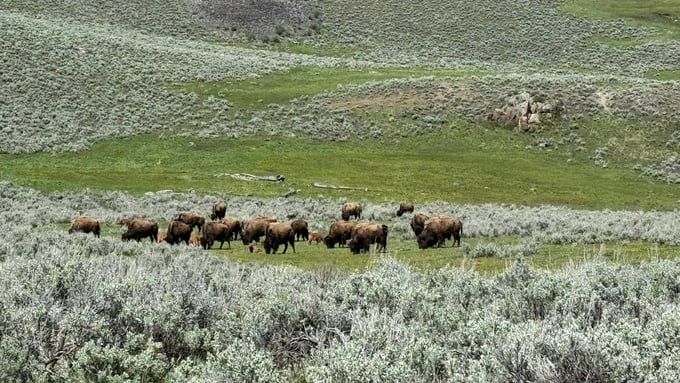
The bison herd in Yellowstone National Park has recovered strongly thanks to conservation efforts.
Our group had the privilege of visiting Yellowstone National Park, the world’s first National Park, covering an area of 898,000 hectares (equivalent to the combined area of Quang Tri and Thua Thien - Hue provinces) spanning three states: Montana, Wyoming, and Idaho.
Historically, in 1872, no state government oversaw Yellowstone, prompting the United States federal government to assume direct management. Yellowstone National Park is recognized by UNESCO as a World Natural Heritage Site for its rich biodiversity and unique geothermal features, boasting 4,023 kilometers of rivers, over 10,000 geothermal features, 845 historical sites, 27 active Native American tribes, 1,160 native plant species, 67 mammal species, 11 native fish species, and 150 bird species.

Sunrise over Yellowstone National Park.
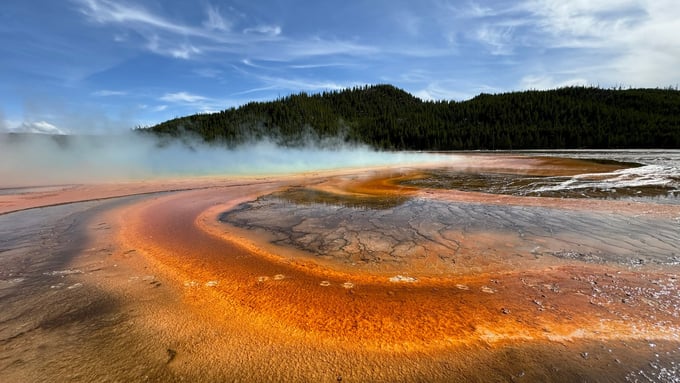
Yellowstone National Park, Grand Prismatic hot springs’ beautiful natural colors.
We also visited Yosemite National Park, situated on the western side of the Sierra Nevada mountains in California. It stands as the third National Park established in the United States following Yellowstone and Sequoia. Initially a California state park, the land was donated by the Federal government in 1864 for mutual conservation efforts.
Later, management of Yosemite National Park was transferred back to the Federal Government. Recognized by UNESCO as a World Natural Heritage Site in 1984, Yosemite covers an area of approximately 303,000 hectares, encompassing diverse terrains and landscapes from deep valleys adorned with majestic waterfalls to pristine forests and impressive granite mountains.
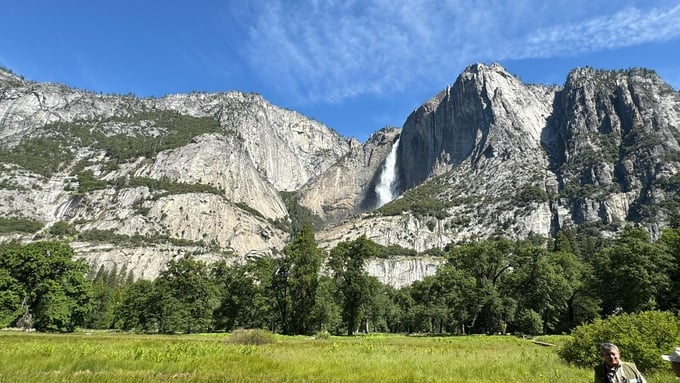
Yosemite National Park with beautiful waterfalls, snow-capped mountains, pine forests and grasslands.
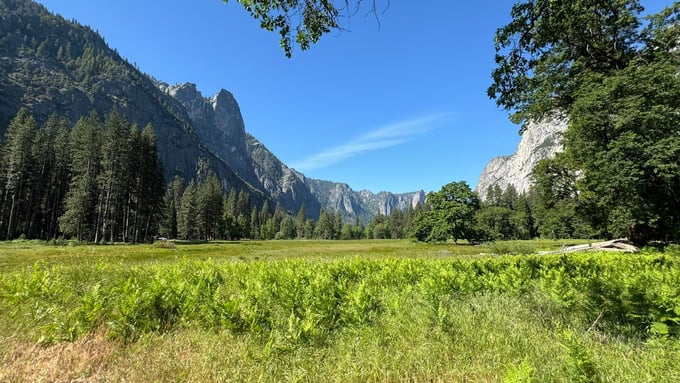
Yosemite National Park, a valley with vast grasslands.
Early one morning, as we cycled from our lodge into Yellowstone National Park, we had the opportunity to witness the original park entrance gate constructed since its inception. Adorning the majestic marble gate of Yellowstone National Park is the inscription: "For the Benefit and Enjoyment of the People" - a testament to the park's founding principle of making nature accessible and enjoyable for all.
From the outset, the establishment of the National Park system in the United States placed people at the heart of all environmental protection and biodiversity conservation efforts. This guiding principle is ingrained in the operational regulations of all US National Parks.
During presentations by the National Park Board of Directors, emphasis was placed on the importance of preserving natural heritage not only to protect the environment but also to ensure that present and future generations can benefit from and appreciate the beauty of nature.
Therefore, National Parks themselves are a public asset for all people. They serve not only as sanctuaries for rare flora and fauna but also play a crucial role in fostering a sense of shared responsibility for conservation. They are essential for public enjoyment, environmental services, and fostering a deeper connection between people, including indigenous groups residing within the parks and visitors alike. This collective engagement ensures that conservation efforts extend beyond preservation to enrich the lives of communities and future generations.
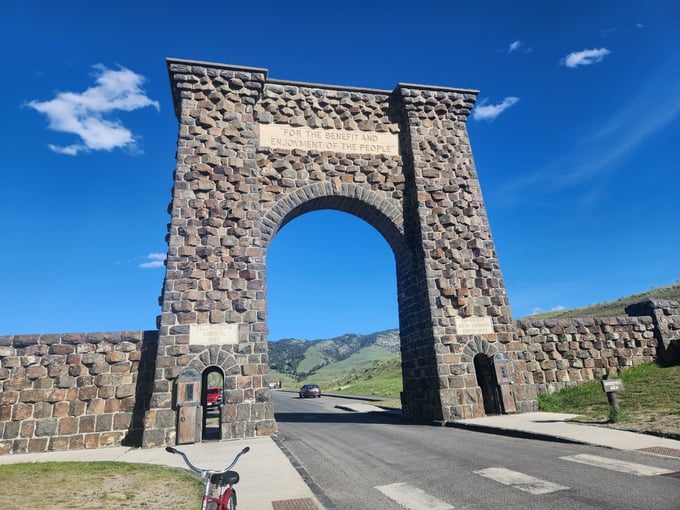
The towering entrance gate to Yellowstone National Park has a famous inscription about the goal of serving the people.
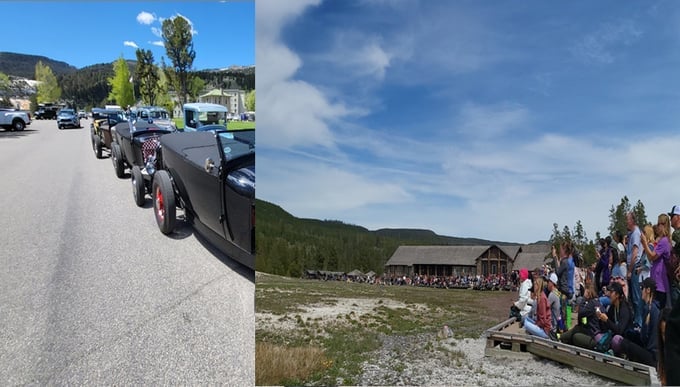
A stream of motorists visit Yellowstone National Park.
The spirit of conservation, deeply rooted within the community, resonated through the stories and images we encountered during our tour. It was embodied by active-duty and retired forest rangers who exuded boundless enthusiasm as they introduced us to the places they hold dear. Despite language barriers, their passion bridged the gap as they eagerly shared stories and experiences of their dedication to preserving the forest's values.
A poignant moment occurred when a nearly 70-year-old former forest ranger paused to pick up litter from the roadside while recounting the history of the forest and its ongoing activities. It was clear that the forest wasn't just a workplace; it was their home, their family, and a source of immense pride.
National Parks serve as cherished landmarks for all. During discussions with leaders at Yosemite National Park, we learned that on average, they welcome over 10 million visitors annually, generating more than $20 million USD (equivalent to 500 billion VND). This revenue accounts for nearly 15% of the park's total operating budget of $130 million USD (more than 3,200 billion VND).
In conversations with tourists and guides, we discovered that for many Americans, owning a recreational vehicle (RV) is essential for packing up the family and escaping into nature on weekends. Camping in National Parks has become a popular way to reconnect with the natural world, no longer considered a luxury but rather a cost-effective and convenient option for families and young Americans alike to enjoy outdoor experiences.
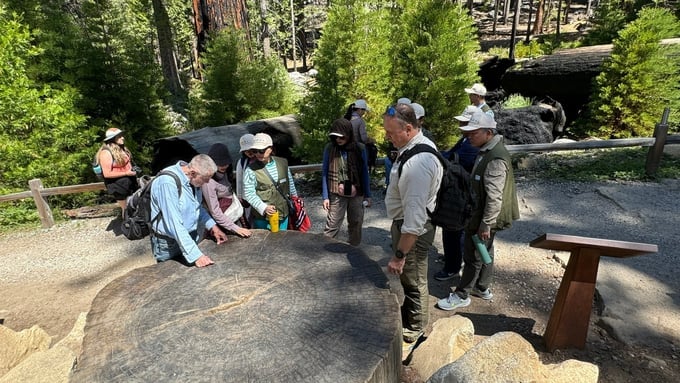
A retired ranger from Yosemite National Park introduces the thousand-year age of the Giant Sequoia tree.
Additionally, through discussions with the National Park Board of Directors, we discovered that entrance fees to the parks range from $3 to $25 per individual vehicle per week. Visitors also have the option to purchase an annual federal park pass called the "America the Beautiful - National Parks and Federal Recreational Lands Pass," which costs $80 per year per vehicle and provides unlimited access to federally managed areas, including those overseen by the US Forest Service, US National Park Service, US Fish and Wildlife Service, US Bureau of Land Management, and US Bureau of Reclamation.
While this pass covers entrance fees, additional charges apply for camping and access to backcountry areas. US citizens aged 62 and older can obtain a similar pass at a reduced rate of $10, and disabled citizens are eligible for a free pass.
During our visits to the National Parks, our group also learned about the existence and growth of Nature Lovers Clubs - National Parks, which are highly popular in the US. These non-profit organizations serve as liaisons between individuals, businesses, and successful entrepreneurs, facilitating donations of both money and time to support the National Parks.
Donation methods vary widely, from modest $10 checks to annual contributions or even bequeathing assets to these organizations after one's passing. Such philanthropic efforts for National Park protection and development are commonplace in the United States.
While comprehensive nationwide statistics are unavailable, Yosemite National Park alone receives approximately $15 million annually through the Yosemite Conservancy, constituting about 11% of the park’s total revenue from these donations.
Meanwhile, Yellowstone National Park receives $3.5 million annually through the Yellowstone Forever organization. Importantly, these funds, managed by the National Park Board of Directors in collaboration with non-profit organizations, are allocated towards conservation efforts, infrastructure enhancements, and visitor services that may not be fully covered by federal or state budgets.
Simultaneously, the National Parks rely on a dedicated community of volunteers who actively support various initiatives. In the expansive Yellowstone National Park, spanning three states, there are over 727 kilometers of drivable roads and 1,170 kilometers of hiking trails, attracting approximately 4 million visitors annually. Despite a staff of 750 employees, the park benefits significantly from the contributions of up to 540 volunteers.
Our group was surprised to discover that amidst the bustling and modern city of San Francisco lies a National Park named after the iconic Golden Gate Bridge. The National Park Service has mobilized a large volunteer community, contributing up to 25,000 days of free labor annually to the park.
These volunteers have played a pivotal role in transforming abandoned areas, once gathering spots for the city’s homeless and criminals, into a vibrant small-scale botanical garden nestled within the heart of the city. They also volunteer as guides for visitors, participate in environmental cleanup efforts, and make financial contributions to support the park.

The botanical garden at Golden Gate National Park in San Francisco, formerly an abandoned wasteland.
National Parks serve as repositories for recognizing, preserving, and promoting the enduring cultural values of indigenous peoples residing within forested areas. Even for those indigenous communities no longer living within the parks, annual religious ceremonies held within the parks attract numerous visitors.
Efforts in nature conservation and community development are also directed toward future generations through educational programs designed to instill a love for nature and a commitment to its preservation among American youth.
Yosemite National Park’s NatureBridge Environmental Science Education Center exemplifies this approach. Here, middle school students can immerse themselves in a 2-3 week residential program, learning about and engaging in nature conservation efforts firsthand.
Furthermore, environmental communication and educational efforts are consistently emphasized at these parks. Visitor centers, signage systems, and interpretive displays at museums, nature trails, historical sites, and scenic viewpoints are meticulously and professionally designed. Tourists visiting National Parks can commemorate their journey with a National Park Passport.
Each passport contains essential information and stunning images of the National Park visited, serving not only as a record of their travels but also as a personal commitment to nature and the preservation of biodiversity.
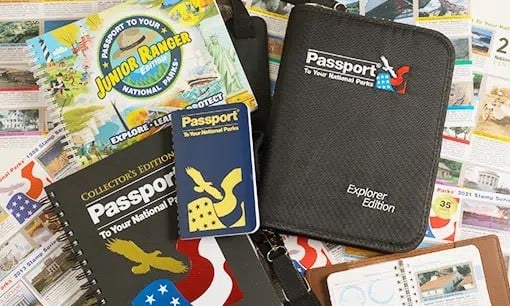
Passports prove you have visited the National Park.
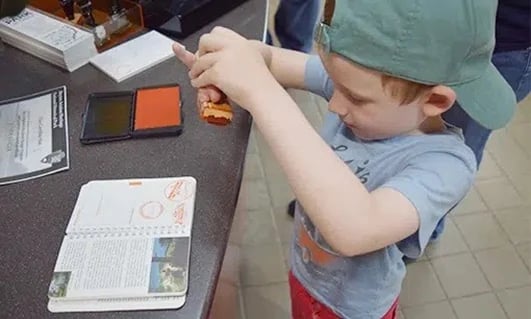
Children, in particular, were thrilled to personally stamp their passports at the parks they visited.
Hiking through the ancient Sequoia forests in Yosemite and Yellowstone National Parks, marveling at mountain peaks over 2,000 meters high still blanketed in thick snow, and traversing expansive pine forests, vast grasslands, majestic canyons, and countless erupting hot springs — these were unforgettable experiences. Witnessing North American bison grazing fearlessly, elk approaching to feed near our lodgings, and myriad birds swooping down to feast on scattered bread crumbs from tourists created lasting memories. Taking a break for lunch beside a babbling stream or on a grassy patch within the National Park’s administrative area added to the richness of our experiences.

Our group paused for lunch on the lawn in front of the Yellowstone Park Management Board’s workhouse.
After crossing the Pacific Ocean and journeying through four US states — California, Montana, Wyoming, and Idaho — in less than ten days, our journey was physically demanding yet spiritually rewarding. It was an incredibly fulfilling and unforgettable experience.
The journey to explore America’s National Parks certainly leaves us with beautiful memories of its vast spaces, stunning nature, and thriving ecosystems. Moreover, the knowledge gained from this trip will provide additional motivation and inspiration, especially for those directly involved in forest management and biodiversity conservation.
We hope that in the near future, the combined efforts of our entire system will help preserve and develop Vietnam’s richest and most beautiful ecosystems and biodiversity resources in the world!
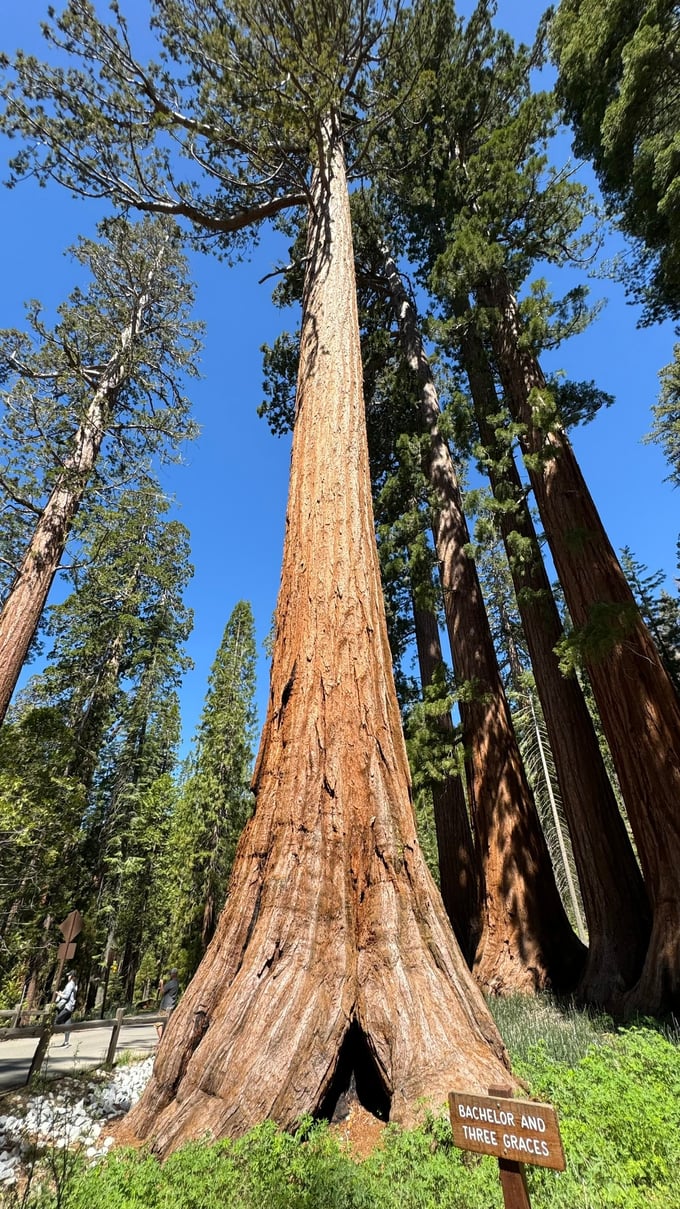
Thousands of years old Sequoia trees in Yosemite National Park.
May our dreams of evergreen fields, lush forests, and azure seas endure forever. Green forever in Vietnam!
“I love green fields as I love people, I love those two lovers as the wind loves the clouds in the sky...
Translated by Quynh Chi
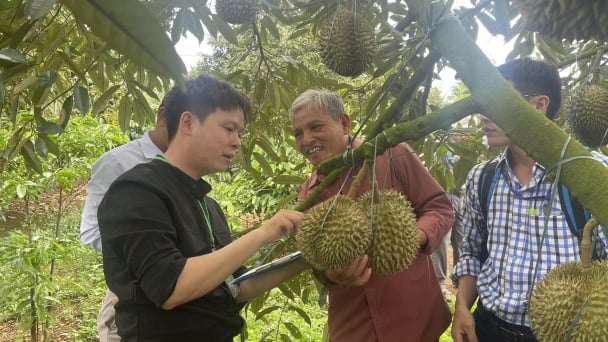
(VAN) For the durian industry to succeed, the value chain must fulfill its commitments to the government, the community, and international partners.

(VAN) Vaccinating juvenile pangasius helps reduce disease, antibiotic use, and farming costs, increasing profits for export-oriented farmers in An Giang.

(VAN) Due to a limited supply of workforce and competitive recruitment requirements, businesses struggle to retain talented veterinary human resources.

(VAN) WOAH’s guidance aims to mitigate disease risks through a One Health approach that balances economic, conservation, and public health interests.

(VAN) Ms. Nguyen Thi Dung, Deputy Director of Ngoc Hoang Cooperative, shared about the journey of bringing dragon fruit to Europe, achieving annual revenues in the billions of VND.
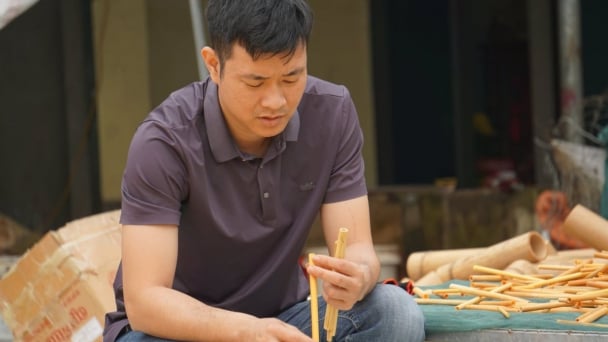
(VAN) Bamboo products from Thang Tho Bamboo Cooperative have reached many countries around the world, while also creating jobs for local workers.
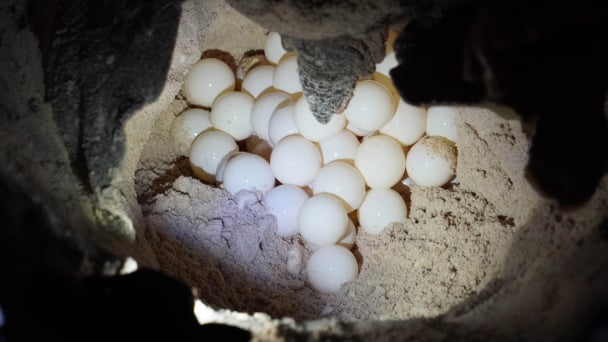
(VAN) The Management Board of Con Dao National Park reported that a green sea turtle, tagged in the Philippines, has traveled thousands of kilometers to lay 84 eggs on Bay Canh Islet.